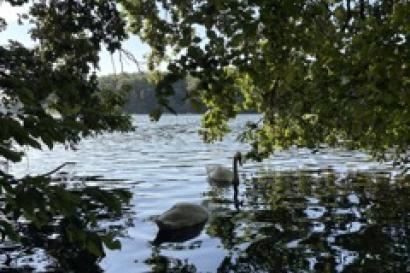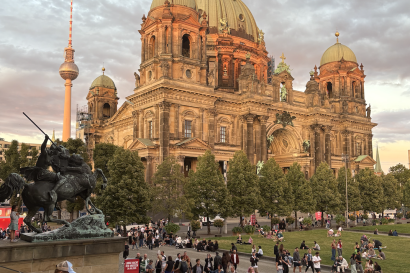For the past couple weeks, I’ve been working on a research project on refugees in Berlin and the need for redesigned urban infrastructure to accommodate forcibly displaced people and families. Germany has the highest immigration rate, both total and per capita, in all of Europe. With this in mind, my laptop has been filled with tabs upon tabs of journals and articles from the World Economic Forum and City Lab. Of course, as I’m in Berlin, I’m also using the city itself as a way to learn more deeply about how refugees are settling in. I recently discovered Refugio Café, a cafe run mostly by and for refugees as a community space for fundraising, cultural events, and as a way to bring together all Berliners, regardless of immigration status. It serves as a barista training cafe for refugees, who make the food there as well. While there, I had a caprese sandwich (tomato, mozzarella, and pesto on grilled grain bread) and continued my research, coming upon an organization called Querstadtein (roughly translated as ‘Across Town’). Querstadtein is a non-profit that gives both refugees and homeless people a chance to tell their stories by giving tours of different neighborhoods of Berlin from their perspectives. I signed up for a tour of Mitte, Berlin’s center neighborhood. The tour group met near Checkpoint Charlie, the infamous crossing point between East and West Berlin. Going around Berlin, from the Holocaust memorial, to in front of a refugee housing complex (pictured in the header), to different spots with remnants of the Berlin wall, to finally the Brandenburger Tor (Brandenburg Gate), I learned about the story of a 22-year-old Syrian refugee from his perspective. He spoke of his studies in Damascus and his ten-day journey to Berlin, shorter than most. He reminded the group of the importance of staying aware to what is happening in one’s community and to recognize that Berliners are Berliners, some just have been forced to leave their original homes due to political or climate crises.
The research project is for my class called Global Challenges of the 21st Century: Design & Global Sustainability. I wanted to focus on the notion of climate refugees. As the climate changes, how are people going to be displaced and how are cities going to have to restructure to accommodate for these changes? Germany is undoubtedly a front-runner in the effort to create sustainable environments and housing for those seeking asylum. From urban gardening to architecturally flexible and malleable apartment complexes in Neukolln (the Ausbauhaus), connecting to refugees themselves is super important and inspiring. Through organizations like Querstadtein and exploring Berlin’s refugee-led urban gardens has allowed me to see more clearly the importance of staying aware in this major turning point of global, national, and personal identity as cosmopolitan citizens.

Caroline Campos
<p>My main interests are music (bossa nova, hip hop, R&B, soul, funk, etc.), visual and performance art, spoken word poetry, and movies when I have the time! I've lived around the US from California to Wisconsin to Virginia and was born in Brazil. San Francisco was a good place to grow up but too expensive, Wisconsin is beautiful in the summer but deadly in the winter, and Virginia is... a whirlwind of a state. I go the University of Virginia and am currently undeclared, hoping to study something with politics, architecture, or media studies.</p>







